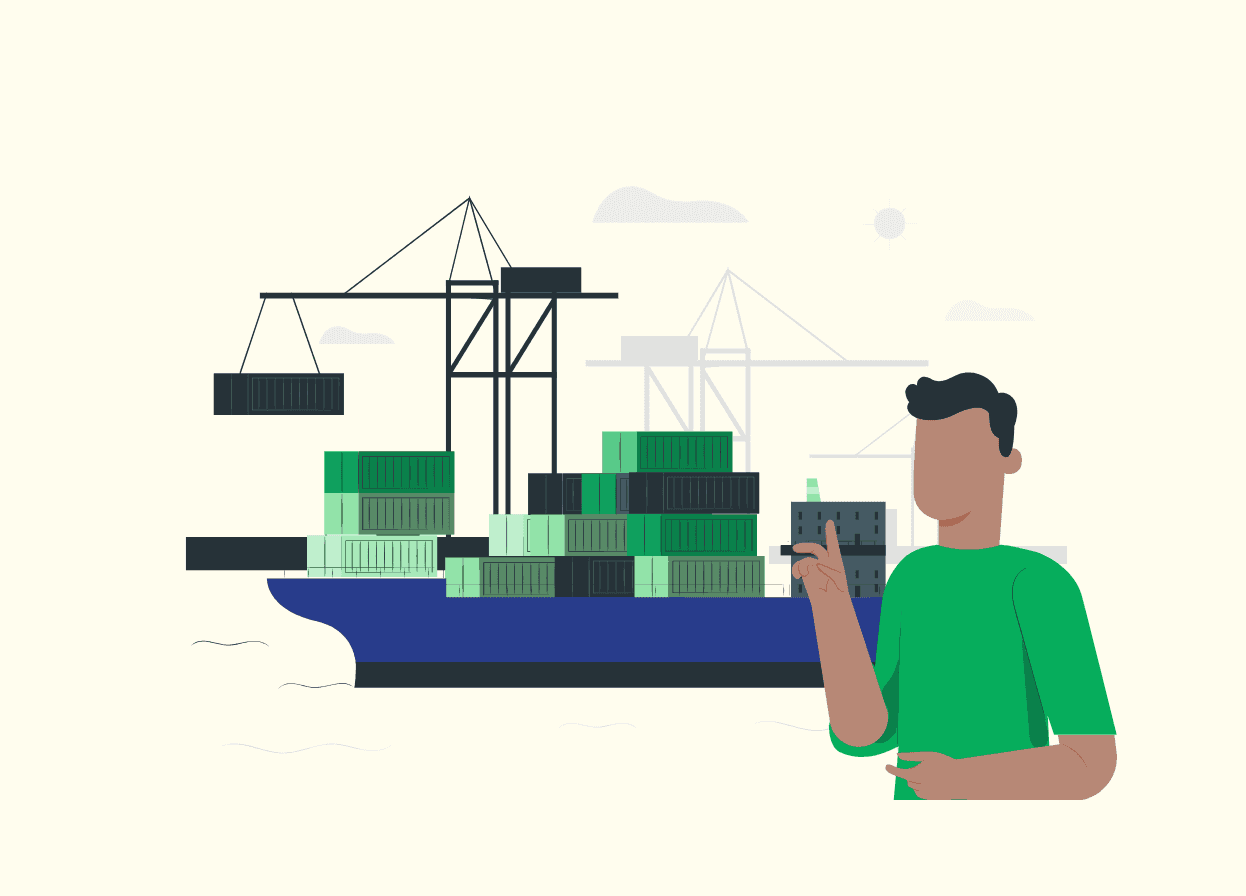Export Promotion Schemes: How Indian Businesses Can Actually Use Them

Export promotion schemes are government programs designed to help businesses sell their products and services in international markets. They offer several benefits to these businesses, like:
- Tax saving
- Interest subsidies
- Access to global markets
- Protection from defaulting clients
There are many such export promotion schemes in India, but most exporters are not taking advantage of these schemes. If you run an agency, SaaS company, MSME or are a freelancer with a strong ambition to grow your business globally, this blog is for you.
In this blog, we will explore the export incentives that matter in 2025 and how to use them for your business.
First: Are You an Exporter? (Most People Don’t Realise They Are)
Let's clear this confusion before we go ahead.
The simplest way to find out if you're an exporter is this: If you’re billing international clients in foreign currency, you’re exporting, even if you don’t ship physical goods.
That means you could be a:
- Freelancer on Upwork or Fiverr: You work with international clients on freelance marketplaces like Upwork and Fiverr and get paid in USD, EUR, or any foreign currency.
- IT and SaaS company: Your software or digital solutions are used by clients outside India. This also counts as exports.
- Marketing or Design agencies: You're working as an agency serving overseas brands or businesses with your creative work
- Consultants, creators, trainers: You're guiding or teaching international clients one-on-one or in groups. This qualifies as an export of services.
- Digital products, courses, and apps: Selling e-books, online courses, or apps to users in other countries falls into this category
If any of these sound like you, or even come close, you’re an exporter. In this blog, we’ll break down the top export promotion schemes available, so you can find the ones that apply to you and maximise the benefits for your business
RoDTEP (Remission of Duties and Taxes on Exported Products)
What it is: This is relevant for goods exporters only. RoDTEP refunds embedded taxes and duties that are not reimbursed under any other scheme. For example, fuel tax paid at the time of transport of goods
Who can use it: Large manufacturers and MSMEs in the D2C, crafts, and electronics space can benefit from this scheme. Exporters working from SEZ or EOU areas are also covered. However, digital service exporters aren't covered currently
How to apply: Apply via ICEGATE during shipping bill filing
Coverage: For FY 2025–26, the scheme includeexport-promotion-schemess 10,780 product categories for Domestic Tariff Area (DTA) exports, covering items like freshwater ornamental fish and natural honey, and 10,795 categories for AA, EOU, and SEZ exports. The benefit is calculated as a percentage of the Free On Board (FOB) value and is reviewed and revised from time to time.
Disbursement Track Record: According to the same source above, as of March 31, 2025, total disbursements under RoDTEP have crossed Rs. 57,976.78 crore
RoSCTL (Rebate of State and Central Taxes and Levies)
What it is: This is best suited for apparel and textile exporters. RoSCTL intends to provide a rebate on embedded taxes and make the Indian textile exports more competitive
Who can use it: This is applicable only for exporters of Apparel (Chapter 61 & 62 of ITC-HS codes), like men's and boys' overcoats, and Made-ups (Chapter 63), like curtains and interior blinds.
Rate Structure: It ranges between 1.7% to 6% of the FOB value
Eligibility: Exporters must apply for the scheme within one year of the shipping bill
How to apply: You can apply for benefits under the RoSCTL scheme from the DGFT website. Remember, you need to have a valid IEC and GSTIN before applying
Cannot combine with RoDTEP: Exporters cannot claim benefits under both RoSCTL and RoDTEP schemes for the same exports.
Interest Equalization Scheme (IES)
What it is: This is available to MSMEs and exporters in select sectors. The Interest Equalization Scheme (IES) provides pre and post-shipment credit to exporters at a subsidised interest rate. It reduces the cost of borrowing and gives them easy access to credit.
Current Status: The scheme has been extended multiple times and is currently available only for MSME manufacturers and exporters with benefits capped at Rs 50 lakhs for FY 2024-25
Sector-Specific Coverage: The scheme covers 410 identified tariff lines for general exporters at 2% interest subsidy, while MSME manufacturers get 3% subsidy across all HS lines
How to apply: Head over to the DGFT website. Choose “Interest Equalization Scheme” from the Services dropdown. Click on “Start Fresh Application” and then follow the steps to fill it out.
Recent Disbursement: From April 2023 to November 2024, the government disbursed Rs. 2,641.28 crore from the allocated budget of Rs. 2,932 crore.
ECGC Export Credit Insurance
What it is: This Export Credit Guarantee Corporation (ECGC) export credit insurance scheme protects Indian exporters from buyer defaults, delays, and political risk. This minimises the risk for freelancers and MSMEs entering international markets and guarantees compensation to them if the buyer defaults.
Coverage Percentage: ECGC typically pays 80-90% of the loss incurred by exporters
How to apply: You can apply for a claim from the ECGC website or go through authorised agents
Claim Timeline: Claims must be lodged within 360 days from the due date of the bill or 540 days from policy expiry, whichever is earlier
MSME Market Development Assistance (MDA)
What it is: Reimbursement on expenses for participating in international trade fairs, buyer-seller meets, and even foreign marketing collateral. The scheme covers both physical and virtual participation.
Who can use it: Freelancers and agencies can claim marketing costs when expanding overseas.
How to apply: They can apply through the DC-MSME or the export promotion councils at least 14 days before the event
Rate Structure: Financial assistance varies by the region. For developed countries, the rate is up to Rs 2.50 lakh, Rs 2.00 lakh for developing countries, and Rs 1.50 lakh for SAARC countries
Annual Event Limit: Companies can avail MDA benefits for only three events per year. Coverage is limited to one representative per company for foreign participation
Special Categories Support: Women entrepreneurs from the Northeastern regions or SC/ST category do not have to pay rent in the event.
Startup India + MAI Support
What it is: Targeted at startups and digital services exporters, the Market Access Initiative (MAI) scheme covers costs for international market access like PR, trade visits, certifications, and market research. Startups can access it via DPIIT or the Startup India Hub
Covered activities: Includes marketing projects abroad, capacity building, statutory compliance support, market studies, project development, and foreign trade facilitation
How to apply: You can register your business on the Startup India portal. You can apply for the MAI scheme with the help of the respective Export Promotion Council (EPC) or trade body relevant to your product
Limit: You can participate in up to 3 MAI events in a year
Here's a quick snapshot of these schemes and what benefits they offer
| Scheme Name | Purpose |
| RoDTEP (Remission of Duties and Taxes on Exported Products) | Refunds hidden central, state, and local taxes on exported goods that aren’t reimbursed elsewhere |
| RoSCTL (Rebate of State and Central Taxes and Levies) | Provides refunds of state and central taxes specifically to apparel and textile exporters |
| Interest Equalization Scheme (IES) | Offers interest subsidies on export loans to MSMEs and select sectors |
| ECGC Export Credit Insurance | Protects exporters against payment defaults, delays, and political risks, especially for MSMEs |
| MSME Market Development Assistance (MDA) | Reimburses costs for participating in international trade fairs and marketing overseas |
| Startup India + MAI Scheme | Provides funding and support for startups and digital exporters to access international markets, covering costs like certifications, PR, and market research |
Discontinued but Frequently Searched Export Promotion Scheme: SEIS & MEIS
The following two export schemes have been discontinued. However, due to their popularity, they are frequently searched by exporters. We included these schemes to let you know what they offered, when they were discontinued, and which new schemes have almost replaced them.
SEIS – Service Exports from India Scheme
Status: Discontinued after FY2019–20.
What it offered: The Service Exports from India Scheme (SEIS) provided incentives typically in the range of 3–7% of net foreign exchange earned to service exporters, including IT, marketing, and consulting. The scheme offered duty credit scrips, which the service providers could use to cover various duties and taxes.
Who benefited: Many freelancers, SaaS founders, agencies, and independent consultants were able to claim these rewards for exporting services.
Why it mattered: SEIS was a major support for small and mid-sized service exporters to help them reduce costs and improve global competitiveness.
Current situation: The scheme has not been renewed, and there is no direct replacement for service exporters. However, some gaps are partially filled by the Market Access Initiative (MAI), Interest Equalization Scheme (IES), and startup-focused programs.
What to do now: Service exporters should explore MAI support for marketing and certifications. They must check the eligibility for Startup India benefits and IES for any export-linked credit needs.
MEIS – Merchandise Exports from India Scheme
Status: Replaced by RoDTEP in 2021.
What it offered: The Merchandise Exports from India Scheme (MEIS) provided incentives typically between 2% to 5% to goods exporters based on the destination country and product category. Like SEIS, the exporters were offered scrips usable for paying customs duties.
Who benefited: MSMEs, D2C brands, and traditional exporters of physical goods.
Key difference: In MEIS, the incentive was calculated as a certain percentage of export pricing, which the exporter could use to pay off import duties. With RoDTEP, the exporters can use the credit scrips to pay for embedded taxes and nothing else
What to do now: Exporters should focus on RoDTEP for goods exports and ensure proper documentation during shipping bill filing to claim benefits.
Documents You’ll Always Need to Claim Benefits
The exact documents will depend on the scheme you're applying for. Having said that, the following basic documents are almost always needed:
IEC (Importer Exporter Code): The Importer Exporter Code (IEC) is a 10-digit code issued by the Directorate General of Foreign Trade (DGFT) for anyone involved in exporting or importing goods and services from India. It is essential for customs clearance, receiving foreign payments, and applying for export incentives. You can apply for an IEC online through the DGFT portal by submitting documents such as your PAN, certificate of incorporation, address proof, and bank details. Typically, the IEC is processed within 1–2 working days
FIRA (Foreign Inward Remittance Advice): The Foreign Inward Remittance Advice (FIRA) is proof that you have received a foreign currency payment into your Indian bank account. It contains important details, like the beneficiary’s name, amount received, currency, sender information, and the purpose of the remittance. The FIRA helps you to stay compliant with the regulatory requirements and claim export incentives
eBRC (Electronic Bank Realization Certificate): The Electronic Bank Realization Certificate (eBRC) is a digital certificate issued by banks confirming that payment for exported goods or services has been received in foreign currency. Banks upload the XML file of the eBRCs directly to the DGFT portal. The DGFT confirms the details and notifies the bank after successful verification. You can later log in to the DGFT website, check the eBRC status, and take a printout when it's ready
How MSMEs Can Apply Without Getting Overwhelmed
The process of applying for benefits under different export incentive schemes can be overwhelming. Especially if you're doing it for the first time. So, here's a step-by-step guide to help you with the process:
- Register for an IEC code on the DGFT portal.
- Next, ensure you use a compliant payment platform such as a major Indian bank or a modern fintech platform that issues both FIRA and eBRC for every foreign payment you receive.
- Track all expenses related to international marketing, travel, and web presence, as many schemes reimburse these costs. Keep invoices and payment proofs organized.
- Register with the Services Export Promotion Council (SEPC) or your State Export Council. This involves submitting your IEC, business documents, and details of your export activities via the DGFT portal or the council’s website.
- Finally, apply for the relevant export promotion schemes through their respective portals, such as DGFT for RoDTEP and RoSCTL, Startup India for startup-related support, and MSME India for market development assistance.
Common Misconceptions Holding You Back
Many inexperienced exporters also hold themselves back from claiming benefits under these schemes due to certain misconceptions. We have gathered the most popular ones to set the record straight
- These are only for big exporters: These schemes are designed for all kinds of exporters. In fact, there are specific schemes designed for MSMEs and even individuals.
- I need a private limited company: Sole proprietors are also eligible under these schemes.
- Too much paperwork: Most portals are digitized, so there is hardly any paperwork, and the process is streamlined from start to end. Documents like FIRA and eBRC can be automated.
- These don’t apply to services - The government is working towards uplifting the service exports. Most of the newer initiatives are service-inclusive.
State-Level Export Incentives (Hidden Gems)
Many Indian states offer export incentives to help local businesses grow globally. These incentives are offered in the form of marketing grants, interest subsidies, and website reimbursements. Here are a few examples:
- Karnataka ELEVATE: This state-run scheme offers grant-in-aid seed funding up to ₹50 lakh for innovative tech startups. You can apply for this scheme from the Karnataka Startup portal when they are accepting fresh applications
- Maharashtra Udyog Mitra: Supports MSMEs with export documentation and compliance, interest subsidies on export credit, and assistance for participation in international trade fairs. To apply for this scheme, you need to register your business on the Maitri 2.0 Portal by visiting the Maitri website and completing the application
- Tamil Nadu Export Promotion Policy: Provides subsidies for certifications, logistics, and quality improvement. Exporters can also claim reimbursement for costs related to international marketing and participation in overseas trade events. Exporters must visit the FaMe TN website and register their business. FaMe TN connects MSMEs in Tamil Nadu with the respective export promotion councils.
To know if your state offers similar export incentives, try out this simple step: Search “[Your State] + MSME export incentive” or visit the Industries Department website.
Make the Most of your Export Payments with Skydo
Export incentives are designed to make Indian businesses more competitive globally, but they’re only part of the picture. A lot of exporters still lose money while receiving their payments because of SWIFT charges, delays, and poor exchange rates.
That’s where Skydo comes in.
We help Indian exporters, from large companies to sole proprietors, receive international payments with no hidden fees or delays. You get virtual accounts in major currencies, live exchange rates, automated FIRA, GST-compliant invoicing, and real-time tracking. All with one flat fee.
If you're already making the most of export incentives, it’s time to fix how you get paid too.












